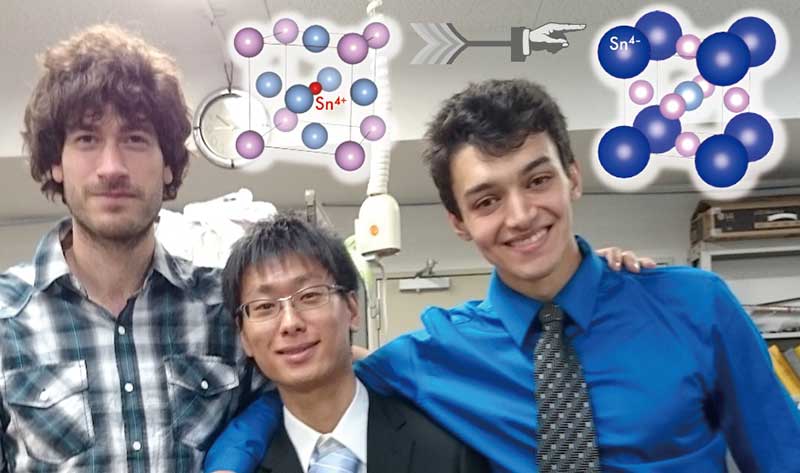In a first, antiperovskite oxides are demonstrated to exhibit the rare state
A research group in the Graduate School of Science has discovered superconductivity for the first time in an "antiperovskite oxide": an oxygen-containing compound that has a metal element in an unusual, negative-ion state. The results of the team's work -- headed by graduate student Mohamed Oudah and colleagues under the supervision of group leader Yoshiteru Maeno -- were published in the journal Nature Communications .
Superconductivity is a phenomenon where the electrical resistance of an object drops completely to zero. This means that no energy is lost when an electric current passes through the material.
Research into superconductivity has gathered robust support from science and industry, due to such materials' applicability in particle accelerators, medical instruments like MRIs, and even in maglev transport systems.
'Perovskite oxides' -- some of the most popular oxides in the study of superconductivity -- are materials with the simple chemical formula AB O 3 , where O stands for oxygen and A and B can be a variety of elements.
Historically, strontium-based SrTiO 3 was the first such oxide found to exhibit superconductivity, kicking off the investigation and discovery of the Nobel-prize-winning 'high-temperature' superconductors, as well as other superconductors with interesting properties.
Compounds with a structural 'mirror image' of perovskite oxides are called antiperovskite oxides , and while these are known to exist, until now no one has reported observing superconductivity occurring among them.
Maeno's group synthesized an antiperovskite oxide with the chemical structure Sr 3- x SnO, where 'x' is coefficient of around 0.5, resulting from strontium deficiencies. When subjected to extremely cool conditions of 5 kelvin (-268ºC), the team observed the two hallmarks of superconductivity: zero electrical resistance, and the expulsion of a magnetic flux.
The scientists hope that their discovery will promote further research into the exploration of related materials, possibly leading to the discovery of additional superconductors.

Perovskite oxide SrSnO 3 (left) and its antiperovskite counterpart (SnOSr 3 , also named Sr 3 SnO) containing Sn 4– , together with Maeno Lab members Niklas Hausmann, Atsutoshi Ikeda, Mohamed Oudah. The antiperovskite oxide was found to exhibit superconductivity.
Paper Information
【DOI】 http://dx.doi.org/10.1038/ncomms13617
【KURENAI ACCESS URL】 http://hdl.handle.net/2433/217595
Mohamed Oudah, Atsutoshi Ikeda, Jan Niklas Hausmann, Shingo Yonezawa, Toshiyuki Fukumoto, Shingo Kobayashi, Masatoshi Sato & Yoshiteru Maeno. (2016). Superconductivity in the antiperovskite Dirac-metal oxide Sr3−xSnO. Nature Communications, 7:13617.





